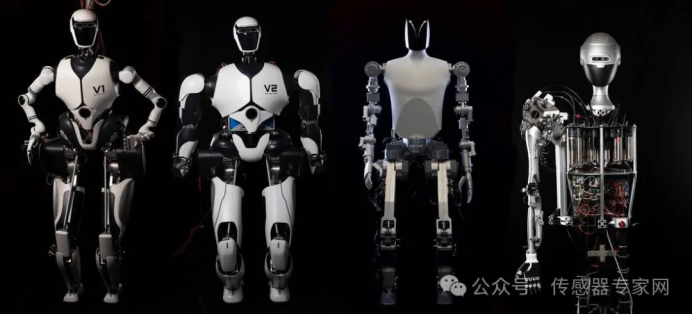With the rapid development of technology, humanoid robots are gradually becoming a part of real life. These robots not only play an important role in industrial production, but also demonstrate enormous potential in multiple fields such as healthcare, scientific research, and services. Among the numerous core components of such robots, the six axis force sensor undoubtedly occupies a pivotal position.

1、 Basic Definition and Principle of Six Dimensional Force Sensor
A six axis force sensor, also known as a six axis force and torque sensor or a six axis force sensor, is an advanced sensor that can simultaneously measure three force components (Fx, Fy, Fz) and three torque components (Mx, My, Mz). Its core structure usually consists of elastic bodies, strain gauges (or piezoelectric crystals and other sensitive components), circuit parts, and signal processing units. When an external force is applied to an elastic body, the strain gauge will deform, thereby changing its resistance value. Through circuit conversion and signal processing, accurate force and torque information can be obtained.
2、 Application of Six Dimensional Force Sensor in Humanoid Robots
Humanoid robots require precise measurement of the force on hand and foot joints, as the actuators of the joints have large and randomly changing force arms during operation. Traditional one-dimensional and three-dimensional force sensors cannot meet this requirement, so robots usually need to be equipped with six dimensional force sensors at the wrist and ankle.
Wrist application: The six axis force sensor installed on the wrist can achieve accurate perception of force and pressure, making the robot more flexible and intelligent in performing various tasks. For example, when picking up objects, sensors can sense the force exerted by the hand in the front back, left and right, up and down directions, and also know whether the hand has caused torque such as twisting or tilting the object.
Ankle application: The six axis force sensor installed at the ankle can help the robot perceive the force and torque during walking, thereby maintaining balance and stability.
A humanoid robot typically requires four six axis force sensors, two located at the wrist and two at the ankle. This enables robots to have higher stability and accuracy when walking and operating objects in complex environments.
3、 Types and brands of six dimensional force sensors
Six dimensional force sensors are mainly divided into several types: strain gauges, capacitive sensors, fiber optic sensors, piezoelectric sensors, and photoelectric sensors. Among them, strain gauges are the mainstream in the current market due to their simple structure, relatively low cost, and good stability.
In the market, the main brands of six axis force sensors include ATI from the United States, Yuli Instruments from China, Schunk from Germany, AMT from the United States, and Kistler from Switzerland. Among them, ATI holds a leading position in the global market, with its products widely used in multiple fields. Domestic brands such as Yuli Instrument, Blue Dot Touch, and Kunwei Technology are also constantly striving to improve their technological level and market share.
4、 Development prospects and challenges of six dimensional force sensors
With the acceleration of mass production of humanoid robots, the application of six axis force sensors in this field is expected to further expand and become an important growth point in the future market. Especially in China, with the continuous advancement of domestic manufacturers' technology and the gradual emergence of cost-effectiveness and service advantages, the localization rate of six dimensional force sensors is increasing year by year.
However, the development of six dimensional force sensors also faces some challenges. For example, the overall sales volume of six dimensional force sensors on the market is still at a relatively low level, and the production cost is relatively high. In addition, domestic brands still lag behind mainstream overseas brands in technology, especially in terms of crosstalk, overload resistance, and inter dimensional coupling errors. Therefore, domestic manufacturers need to continue to increase their research and development efforts, improve product quality and technological level, in order to better meet market demand.
5、 Conclusion
As one of the core components of humanoid robots, the six axis force sensor plays a crucial role in force perception and control of robots. With the continuous advancement of technology and the expansion of application fields, six dimensional force sensors are expected to achieve wider applications and higher international competitiveness in the future. At the same time, domestic manufacturers should seize the opportunity, continuously improve their own strength, and contribute more to the development of humanoid robots.
Source: Sensor Expert Network



